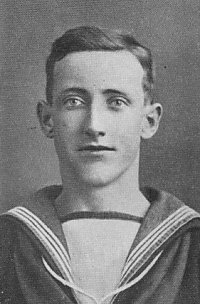
JOHN SYDNEY HENRY HAGAN
1905-1908.
LEAVING the School in 1908, J. S. H. Hagan served an apprenticeship to a Carpenter before the outbreak of war. In the Navy he was attached to H.M.S. Hampshire as one of the carpenter's crew. With this vessel he went into the Battle of Jutland on the afternoon of 31st May, 1916. The ship had the good fortune to return to Scapa Flow without mishap, but at 8 o'clock in the evening of the following Monday, June 5th, when clearing home waters in rough weather off the western coast of the Orkneys, she struck a mine or rock and sank. There were but one or two survivors.
[The Commonwealth War Graves Commission (CWGC) website lists John Sidney Henry Hagan (M/6071), Carpenter's Crew, HMS Hampshire, Royal Navy, date of death, 05/06/1916, aged 23, remembered on the Portsmouth Naval Memorial. Son of James and Frances Hagan, of Wood Cottage, Elmfield, Ryde, Isle of Wight. Native of Portsmouth.]
ARTHUR CHARLES HALL
1908-1910.
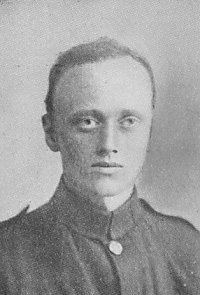
AFTER taking the First and Second Year's Courses of the Secondary School he passed into the Army Ordnance Department, Woolwich, as a Boy Artificer, and continued his training at Ordnance College, where he did well and obtained the Superior Certificate in April, 1914.
Then the war broke out and he went to France with the " Old Contemptibles," qualified for the Mons Medal, and was recommended for the D.C.M. After two years in France, he was gassed and received serious injury to his lungs. Then he went to the East where he served for a year and eight months. The old injury to his lungs caused him a great deal of trouble and he died of pneumonia on November 28th, 1918, in the Hospital at Ludd, a few miles south of Jaffa. He was buried in Ramleh Military Cemetery, 25 miles west of Jerusalem on the Jaffa Road.
During his short career, Arthur C. Hall had risen to the rank of Fitter Staff Sergeant in the R.G.A., and at the time of his death he was serving in the 300th Siege Battery R.G.A.
The Major of the Battery wrote of him :- " He could never be induced to take his duties lightly. The guns of the Battery were under his direct care and he never tired in his duty toward them ; as a result, during the whole course of the Battery's career we have never had a gun out of action when it was needed to fire."
[The CWGC website lists Arthur Charles Hall (158399), Royal Garrison Artillery, date of death, 27/11/1918, aged 22, buried in the Ramleh War Cemetery. Son of Emma Blanche Hall, of 42, Finsbury St. Buckland, Portsmouth, and the late Albert Hall.]
HENRY CECIL HALL
1910-1911.
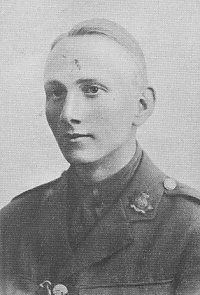
HENRY CECIL HALL, brother of Arthur Charles Hall previously mentioned, left the school after taking the First Year's Course, and went into employment at an early age. He joined the 2/6th Hampshire Regiment and became Lance Corporal attached to the 2/6th Royal Warwicks. In the Battle of the Somme, 1916, he was promoted to Corporal on the Field and finally became 2nd Lieut. in the 1st Hampshire Regiment.
He was killed in action on October 4th, 1917, "somewhere in France," and his body was not recovered as it was in a very exposed position.
The Colonel of the 1st Hampshire Regiment wrote :-" On the day in question, he did his duty nobly, gallantly leading his platoon forward in the attack, and had taken them over 1000 yards before he was killed by a shell. He always did his work in a most thorough and painstaking manner, and I had great confidence in him."
2nd Lieut. H. C. Hall was aged only 19 years at the time of his death.
[The CWGC website lists Henry Cecil Hall, 2nd Lieut., Hampshire Regiment, date of death, 04/10/1917, aged 19, remembered on the Arras Memorial. Son of Emma Blanche Hall, of 42, Victoria Rd. South, Southsea, Hants.]
LEONARD REGINALD HEATH
1901-1902.
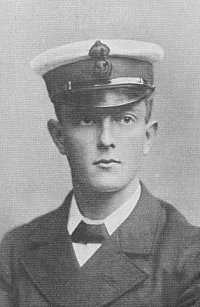
FROM this School L. R. Heath was successful in securing by competitive examination a Naval Shipwright Apprenticeship. The first four years of this were worked in H.M. Dockyard at Portsmouth, and then at the age of 18 he was passed into the Royal Navy.
In the summer of 1914, near the time of the commencement of hostilities, he was transferred to H.M.S. Bulwark. On this vessel he was serving as a Chief Petty Officer, 1st Class, when, as the result of a violent internal explosion, the ship was blown up at Sheerness on 26th November, 1914. At the time of his death, Mr. Heath, who was 26 years of age, was about to take the examination to secure warrant rank. He leaves a wife and two children.
[The CWGC website lists Reginald Leonard Heath (345674), Shipwright 2nd Class, HMS Bulwark, Royal Navy, date of death, 26/11/1914, aged 26, remembered on the Portsmouth Naval Memorial. Son of Joseph Heath, of Portsmouth, and the late Mrs. Heaton; husband of Hilda Caroline Louisa Heath, of 4, Shakespeare Rd., Kingston, Portsmouth.]
EDWARD WILLIAM HATCHER
1899-1901.
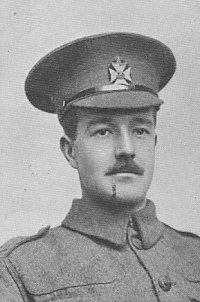
HAVING decided to become a Schoolmaster, E. W. Hatcher left the School to serve his apprenticeship as a Pupil Teacher in one of the Portsmouth schools. In due course he proceeded to Winchester Training College, where he became a member of the College Company of the Hampshire Volunteer Rifles and, at the end of two years' residence, gained the Teacher's Certificate with additional qualifications. He was an ardent swimmer and the holder of the Royal Humane Society's Life Saving Certificate. In August, 1908, upon leaving Winchester, he was appointed an Assistant Master in a school at Pimlico, London.
When war came he was on holiday in Switzerland, and in common with others had some difficulty in getting home. In November, 1914, he responded to the call for men by enlisting as a Private in the 9th (County of London) Battalion, the London Regiment (Queen Victoria's Rifles). Following a short period of training at Crowborough, he was drafted to France at the end of March, 1915. Within a month he saw desperate fighting at Hill 60, at St. Julien, and in the second Battle of Ypres. Early in the next year he became a lance-corporal.
On 1st July, 1916, the great offensive began along the Somme front. The 9th Londons attacked in the early morning on the right of Gommecourt Wood, north of Albert, and took three lines of German trenches, which they held for several hours. Then the enemy put up a heavy barrage behind our men to stop reinforcements from coming up, and at the same time made a vigorous counter-attack. While bombs lasted a stout resistance was offered, but in the subsequent retirement very heavy casualties were suffered, not a hundred returning of the three companies of the 9th Londons that set out in the morning. Corporal Hatcher was among the many who were reported missing. Later, a comrade from a camp of British war prisoners reported that he had seen him, severely wounded in the back, lying quite still in an exposed position where it was quite impossible to render any assistance. No more definite information has ever reached his relatives, so that it is concluded he must have succumbed that day to his wounds.
A survivor makes mention of Mr. Hatcher's fearless behaviour and of the esteem in which he was held.
[The CWGC website lists Edward William Hatcher (3442), London Regiment (Queen Victoria's Rifles), date of death, 01/07/1916, age unknown, remembered on the Thiepval Memorial.]
HERBERT HENRY HAYES
1905-1908.
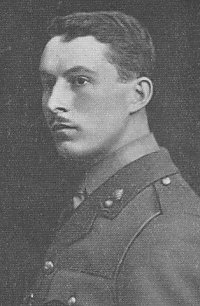
H. H. HAYES took the Three Years' Course of the School in preparation for a Dockyard Apprenticeship, which he obtained in 1908. Besides being a good student he was outstanding in sports and games, and took great interest in manual work.
He made exceptionally good progress in the Dockyard School, and gained a Royal Scholarship and a Whitworth Exhibition. He joined the Royal College of Science, and in 1913 entered the Electrical Department of the City and Guilds College, where-to quote the Registrar of the College-" He gave evidence of ability and zeal far above the average and gave promise of becoming an ornament to the engineering profession."
He was gazetted 2nd Lieut., R.G.A., in October, 1914, was promoted to Lieut. in 1915, and embarked for France with the 58th Siege Battery in 1916. Promoted to Captain in 1917 and to Major in 1918, he was twice mentioned in Sir Douglas Haig's Despatches-May 17th, 1917, and December 23rd, 1918.
Major Hayes was killed by a shell on October 1st, 1918, at Fins, near Cambrai. This ended a short and brilliant career of great promise to the engineering world.
The General of the 5th Corps wrote of him :-" Ever since he has commanded his Battery, no man could have done more to improve its efficiency, and his personal gallantry was always outstanding."
[The CWGC website lists HH Hayes, Majojr, Royal Garrison Artillery, date of death, 01/10/1918, age unknown, buried in the Fins New British Cemetery, Sorel-Le-Grand.]
JAMES HARRY FREDERICK IGGLEDEN
1904-1905.
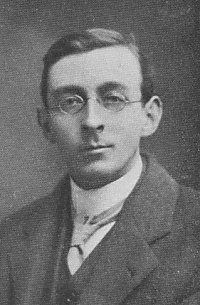
FOLLOWING his one year in the Secondary School, where he evinced special interest in the Camera Club, J. H. F. Iggleden was for two years a Pupil Teacher at the Stamsbaw Council School before proceeding to the Hartley University College, Southampton, for a two years' course of training. On gaining the Teacher's Certificate he returned to Portsmouth as an Assistant Master in the Stamshaw School. Here he remained until August, 1912, when he transferred to Wellington Place School.
Voluntarily he gave up his professional work in November, 1915, to enlist in the 2/6th Battalion Hampshire Regiment. After a short period of recruit training at Bournemouth, he left England with a draft for India on 14th March, 1916. Thence he proceeded in September, 1917, with the Battalion to Mesopotamia, where the Regiment had much severe marching.
On 27th June, 1918, while bathing in the River Tigris, he was drowned, in spite of a gallant effort by two of his comrades to rescue him.
[The CWGC website lists James Harry Frederick Iggleden (281367), Private, Hampshire Regiment, date of death, 27/06/1918, age unknown, remembered on the Basra Memorial.]
FREDERICK ARTHUR JEFFERY
1905-1907.
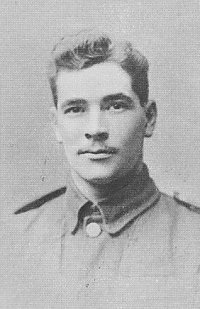
F.A. JEFFERY concluded his two years in the Secondary School by securing an apprenticeship in H.M. Dockyard. He was serving as a Shipwright at Portsmouth when on the 11th September, 1914, he enlisted voluntarily in the Royal Engineers. Subsequent to winning the efficiency medallion he was made a Rifle Instructor.
In July, 1916, he was drafted to join the troops in France as one of their 284th A.T. Company. Promotion to the position of Bridging Corporal soon followed. For upward of a year he took part continuously and without mischance in action in the Ypres area, but on the 5th August, 1917, he was wounded with shrapnel steel in fourteen places on various parts of the body. As " a casualty " he was then removed to the Bath War Hospital. This was the beginning of prolonged suffering, for he survived an attack of bronchial pneumonia only to fall a victim to abscess on the liver and empyema.
On 17th December, 1917, he passed away at the age of 25. His body was brought to Portsmouth and buried in the Milton Cemetery.
[The CWGC website lists Frederick Arthur Jeffery (28653), Corporal, Royal Engineers, date of death, 17/12/1917, aged 25, buried in Milton Cemetery, Portsmouth. Son of Frederick Arthur and Fanny Emily Jeffery, of 78, Walmer Rd., Fratton, Portsmouth.]
ROYSTON SIDNEY JENKINS
1904-1907.
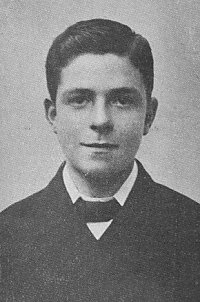
FOR three years R. S. Jenkins remained a pupil of the Secondary School and at the end of that period secured a nomination as Boy Artificer in the Navy. After completing his training on H.M.S. Fisgard he served in a number of H.M. ships, including the Victory, Good Hope and Caroline.
In January, 1917, as an Engine Room Artificer, he was one of the crew of Submarine E 36 when that vessel was lost.
The secrecy of movement and the many hazards to this class of vessel in war time make it almost impossible that the details of a catastrophe shall become known. In this case, as in many others, the circumstances of the loss can only be conjectured.
[The CWGC website lists Sidney Royston Jenkins (M/104), ERA 3rd Class, Submarine E36, Royal Navy, date of death, 19/01/1917, aged 24, remembered on the Portsmouth Naval Memorial. Son of T. and E. H. Jenkins, of 2, Manners Rd., Southsea, Portsmouth.]
A. HAROLD JONES
1905-1908.
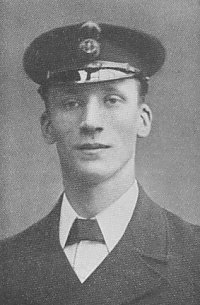
HAROLD JONES had been a pupil of the Secondary School for three years when by competitive examination he succeeded in gaining admission to H.M.S. Fisgard as a Boy Artificer.
Completing satisfactorily the prescribed course of training, he became an Engine Room Artificer, and in 1916 was serving on H.M.S. Black Prince. With this armoured cruiser he went into the Battle of Jutland on Wednesday, May 31st. Just after 6 p.m. this vessel, as one of the First Cruiser Squadron engaged in driving in the enemy light cruisers, got, on account of mist, into a position between the German and British Battle Fleets. As a consequence, the Black Prince received damage which led later to her destruction.
Mr. Jones, who was 23 years of age, was among those who perished with the loss of the ship.
[The CWGC website lists Arthur Harold Jones (M/551), ERA 3rd Class, HMS Black Prince, Royal Navy, date of death, 31/05/1916, age unknown, remembered on the Portsmouth Naval Memorial.]
FRANK CECIL KNOWLES
1913-1916.
WHILST working in the Third Year of the Secondary School Course, F. C. Knowles was successful in the Civil Service Examination for Boy Clerks, and left to take up an appointment in London. This was in 1916, and in October of the second year after, on reaching his 18th birthday, he joined the Royal Navy as a Seaman Telegraphist. His arrival at the Crystal Palace for training had a tragic sequel. Following inoculation he was almost immediately attacked by influenza and, pneumonia supervening, he passed away on the 24th of the same month in which he had enlisted.
[The CWGC website lists FC Knowles (Z/10149), Royal Naval Volunteer Reserve, date of death, 24/10/1918, age unknown, buried in the West Norwood Cemetery.]
GEORGE THOMSON LAUGHLAND
1905-1908.
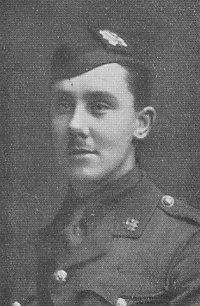
AT the conclusion of three years as a boy in this school, G. T. Laughland joined other members of his family in their business as tailors and outfitters. After the necessary training in Britain, he went to France as a 2nd Lieutenant with the 5th Battalion of the Highland Light Infantry and for a time was acting Adjutant.
On 21st June, 1917, he was hit by a shell, receiving severe wounds in the shoulder and back. From the Regimental Aid Post to which he was at once taken, he was conveyed to the 91st Field Ambulance, where he died a few hours later. The next day he was buried in the French Military Cemetery at Nieuport.
There is ample testimony to Lieut. Laughland's popularity and efficiency as an officer in letters to his mother. The Colonel remarks " how very highly thought of he was in the Battalion," and that "he was an exceptionally capable and keen officer . . . well above the average." The Chaplain says : " I knew Mr. Laughland well and I liked him. He was always so kindly and courteous, with officers and men he was popular. His life was clean and straight." But it may be that the most convincing evidence of his capacity and worth comes from the Sergeant of No. 14 Platoon, D Coy., who, speaking for himself and the men, after saying that he " pays a little tribute to one of the finest officers we have ever had in command," adds that "he was capable of handling the men in a manner that was entirely to their liking and by his tact was able to bring out the best in them on every occasion."
[The CWGC website lists GT Laughland, 2nd Lieut., Highland Light Infantry, date of death, 21/06/1917, aged 24, buried in the Coxyde Military Cemetery. Son of James and Janet Laughland, of go, North St., Gosport, Hants.]
EDWIN GEORGE LING
1906-1909.
G. LING was a pupil of the Secondary School for nearly three years and passed into the Army as a Boy Artificer in 1909. He continued his training and education at Ordnance College, Woolwich, and when war broke out he went to France in the R.F.A. as one of the " Old Contemptibles."
In those early days of the war he shared the fatigue of the advance to Mons and the long marches and desperate fighting against superior numbers in the retreat from Mons to the Marne. Later he fought at Ypres, where he was severely wounded. He returned to England and recovered from his wounds.
After a short stay at Hilsea, E. G. Ling, then Sergeant of the Field Artillery, was sent to France and died in Hospital of meningitis on June 26th, 1915, before he had quite reached 21 years of age.
[The CWGC website lists EG Ling (60497), Serjeant, Royal Field Artillery, date of death, 26/06/1915, age unknown, buried in the Longuenesse (St. Omer) Souvenir Cemetery.]
LEONARD CHARLES MAJOR
1902.
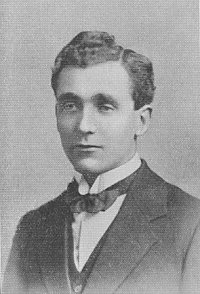
BY passing the Examination of the Civil Service Commission, L. C. Major became a Ship and Electrical Fitter's Apprentice in H.M. Dockyard, Portsmouth.
During the war he served as an Electrician on board H.M.S. Queen Mary and went with this vessel into the Battle of Jutland on the afternoon of 31st May, 1916. Between four and five o'clock this battle cruiser, which had in the early days of the war taken part in the Battle of the Bight of Heligoland, and which was known throughout the Fleet for its excellent gunnery, was hit and blew up.
Mr. Major was 27 years old at the time of his death.
[The CWGC website lists Leonard Charles Major (M/1732), Artificer Electrical 3rd Class, HMS Queen Mary, Royal Navy, date of death, 31/05/1916, aged 27, remembered on the Portsmouth Naval Memorial. Son of Mary Jane Major, of 24, Teddington Rd., Milton, Portsmouth, and the late Eli Major.]
THOMAS LESLIE MAKEPEACE
1901-1903.
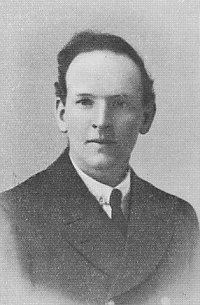
IN the School T. L. Makepeace worked well and took a high place on the Dockyard list in 1903. After serving his apprenticeship he entered the Navy as an Engine Room Artificer in 1909. He served on H.M.S. Roxburgh, Good Hope, and Diadem.
In 1913 he entered the Submarine Service, being appointed to D 4. He was therefore accustomed to this important work at the time when war broke out, and served in Submarine E 2, both in the North Sea and the Sea of Marmora. In the latter place the work was especially trying and dangerous. The strain told on his health but he would not give in until compelled to do so, and was finally invalided for nerve collapse. He never became really better, and finally died in hospital in England at the age of 30 years.
[The CWGC website have no record for Thomas Leslie Makepeace.]
REGINALD THOMAS MILLS
1908-1909.
WHEN R. T. Mills had been one year in this school, his parents removed to London, and he with them. Until his appointment as Boy Clerk in 1911, his education was continued at Clark's College, Brixton.
With the coming of hostilities he enlisted voluntarily in a Battalion of the London Regiment. After a period of home training he went to France, and was seen to fall in an attack near Festubert.
[The CWGC website lists Reginald Thomas Mills (2933), Private, London Regiment, date of death, 09/05/1915, aged 19, remembered on the Ploegsteert Memorial. Son of James and Nellie Mills, of 13, Bramfield Rd., Battersea, London. A Civil Servant. Enlisted Oct., 1914.]
CHARLES GERALD MITCHELL
1899-1900.
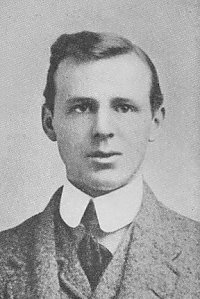
FOR occupation after leaving school, C. G. Mitchell selected the piano business, in which he engaged first in England and then in Rhodesia, South Africa.
He responded to "the call for volunteers to serve overseas and joined the Colonial Forces, enlisting as a Gunner in the South African Heavy Artillery. With the 73rd Siege Battery he was conveyed to France. Then on the l0th April, 1917, while this unit was taking part in the great British Offensive in front of Arras, he was killed. His body was laid to rest to the north-west of the town in the Ecoivres Military Cemetery."
Later his Captain wrote :-" Your son was a good comrade and soldier and the South African Artillery loses one of its best members by his death."
[The CWGC website lists Charles Gerald Mitchell (1032), Gunner, South African Heavy Artillery, date of death, 20/04/1917, aged 20, buried in the Ecoivred Military Cemetery, Mont-St. Eloi. Son of J. H. and S. J. Mitchell, of Southsea, England.]
HERBERT LEWIS MITCHELL
1905-1909.
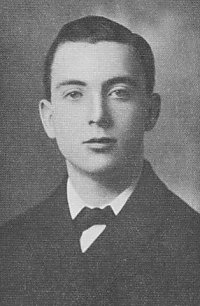
ON the completion of a four years' course in the Secondary School, H. L. Mitchell was successful in the Examination of the Civil Service Commission and became a Boy Artificer on H.M.S. Fisgard. At the conclusion of his training he was sent to H.M.S. Hindustan and later to H.M.S. Invincible, on which he served throughout the war until his death.
He took part in three of the important naval engagements, being present at the Battle of Heligoland Bight on 28th August, 1914, when German cruisers were sunk, at the Battle of Falkland Islands on 8th December, 1914, when the German Pacific Fleet was destroyed, and again at the Battle of Jutland on the 31st May, 1916.
In the last and greatest fight the Invincible, leading the Third Battle Cruiser Squadron, was hit and sunk at about 6.30 in the evening. The Admiral, the Captain and, with a few exceptions, the whole crew perished.
To Mr. Mitchell's relatives his loss was intensified by the deaths in the war of two of his brothers who, however, were not old boys of this school.
[The CWGC website lists Herbert Lewis Mitchell (M/1125), ERA 4th Class, HMS Invincible, Royal Navy, date of death, 31/05/1916, aged 22, remembered on the Portsmouth Naval Memorial. Son of James and Isabella Mitchell, of 106, Francis Avenue, Southsea, Hants. Native of Portsmouth.]
WALTER HENRY MORGAN
1904-1905.
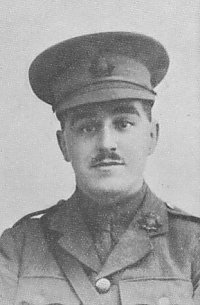
AT the end of a year in this School W. H. Morgan became a Pupil Teacher under the Local Education Committee, and then proceeded to Bristol University College to prepare for the Teacher's Certificate. While at the Secondary School he gained a place in the Football Eleven by keen and skilful play, and later at Bristol acquitted himself so well as to be elected Captain of the Training Department Team.
At the time war was declared he held a post as Master at the Royal Hospital School, Greenwich. The duties of this office he at once set aside to enlist as a Private in the 6th Battalion Hampshire Regiment, and with his unit went to India in October, 1914. A year later he was given a commission and sent home for training. This being completed he went in May, 1916, as a 2nd Lieutenant of the 13th Hants, to France, and was there attached to the 15th Battalion.
On the l2th July, before he had been two months with the Expeditionary Force, his end came. The manner of it is best told in the words of his Colonel :
" He died very gallantly attempting to save the lives of wounded men of another regiment in the Brigade, who were raiding the enemy's trenches. The wounded lay in ' no man's land,' and he went out to their relief. Personally, I feel the loss of an Officer the Regiment could ill spare and one who had he lived would undoubtedly have risen by his ability and courage far above his present rank."
From other accounts it is clear that Lieut. Morgan 's act was quite voluntary and undertaken in the midst of heavy shell and machine-gun fire. He was killed instantaneously about 40 yards in front of the British trenches. His body was brought in and now lies buried in the Ploegsteert Cemetery.
[The CWGC website lists WH Morgan, 2nd Lieut., Hampshire Regiment, date of death, 12/07/1916, age unknown, buried in the Berks Cemetery Extension.]
FRANK MITCHELMORE ALDRIDGE NELDER
1898-1899.
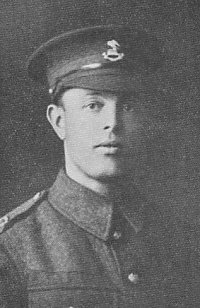
AFTER a creditable year's work here, F. Nelder proceeded to Portsmouth Grammar School as the result of winning a Scholarship. When a young man he had employment as Clerk in the Capital and Counties Bank, but relinquished this later to become a Shipping Clerk to the Liverpool Mersey Dock and Harbour Board.
In August, 1914, he responded immediately to the appeal for recruits and joined the 17th King's Liverpool Regiment, locally known as the 1st Battalion Liverpool " Pals " and raised by Lord Derby. His training stations were Prescot, Grantham and Salisbury. Corporal Nelder went to France in November, 1915, and served continuously with the 89th Brigade until after the Armistice. He returned to England in February, 1919, but so spent with the efforts of the preceding years that he was unable to fight successfully against a combined attack of influenza and pneumonia, and died on the 11th of the same month at the University Hospital, Southampton.
Mrs. Nelder had the body of her husband taken north and he was buried with full military honours at Anfield, Liverpool.
[The CWGC website lists Frank Mitchelmore Aldridge Nelder (15395), Lance Corporal, The King's (Liverpool Regiment), date of death, 12/02/1919, aged 34, buried in Liverpool (Anfield) Cemetery and remembered on the WW1 Memorial at Portsmouth Cathedral. Son of George and Jane Nelder, of Portsmouth; husband of Gertrude Nelder, of Stanley Park Avenue, Liverpool. Served from 1914.]
ARTHUR ROBERT NICHOLS, M.C., B.A.
1904-1908.
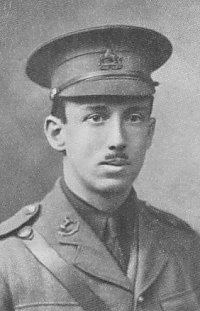
A R. NICHOLS was a pupil at the School from 1904 to 1908, during which time he showed all those attributes of mind and character which afterwards developed so conspicuously. Before leaving the Secondary School he passed London Matriculation, and was then for a time a Pupil Teacher at St. Mary's Road School preparatory to becoming a member of the University College, Reading, where in 1913 he took the degree of B.A., London University, graduating in 1st Class Honours in Philosophy.
When the war broke out he was gazetted 2nd Lieut. in the King's Liverpool Regiment, having previously belonged to the O.T.C. at Reading, and the next year he was in France, where he was wounded, and until he had completely recovered was engaged for some time in transport duties, which he carried out most efficiently.
In the neighbourhood of Le Cateau, in October, 1918, raged one of the fiercest battles of the war. The Germans had taken up a strong position on the steep and wooded slopes beyond the River La Selle, the ground bristling with wire entanglements and machine guns, and intersected with trenches ; the British had to advance over an almost level swampy ground, cross a bridgeless river in the face of a merciless fire, and turn their flank. Day after day this battle raged, and the British purpose was accomplished-but with the loss of some of our bravest and best. It was here that Captain Nichols gained the Military Cross and shortly afterwards was killed.
The subjoined extracts are from the War Office and his Colonel ; the former gives particulars of how he gained the Military Cross :-" On the l0th October, 1918, north of Le Cateau, this Company Commander succeeded in getting his entire Company across the flooded River La Selle, although the only means of crossing at that time was a fallen tree. Several men swam and waded breast high, led by Captain Nichols, and the remainder were got across by the temporary bridge, the operation taking over an hour. The work was done under machine gun fire; its successful accomplishment was due to his conspicuous gallantry and skill in leadership." " Captain Nichols was instantly killed by a shell as he was advancing to the attack with his Company on the 23rd October I feel the loss myself most acutely, as he was a splendid leader and extremely capable." A brother officer wrote :-" The Company was advancing under a terrific German barrage which caused us many casualties and we had only gone a few hundred yards when your brother was killed ... was a brilliant soldier and a perfect gentleman."
He was buried at Montay, near Le Cateau.
[The CWGC website lists Arthur Robert Nichols, Captain, The King's (Liverpool Regiment), date of death, 23/10/1918, aged 26, buried in the Montay Communal Cemetery. Son of the late Lt. John Hutchings Nichols, R.N., and Emily Nichols. Native of Portsmouth. B.A. (London), and Associate of Reading University College.]
WILLIAM STANLEY OVER
1904-1906.
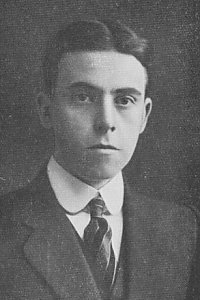
ON leaving school W. S. Over entered the Civil Service as a Boy Clerk, later becoming Abstractor and Prison Clerk. He was deeply interested in religious and social work in England, and at Acton he did a good work among the young men of his Church. He was Secretary of the Football Club.
After repeated application on his part he was allowed to enter the Army. He joined the 2nd Portsmouth Battalion in the summer of 1915, leaving for active service in May, 1916.
By this time he was a Sergeant and soon saw much service. In the Great Push on the Somme the losses were terrible, and on September 15th, near Delville Wood, on the Fleurs Road, he had just left the shelter of a shell hole and was rushing forward in an attack when he fell, killed by a machine-gun bullet. He was then 26 years of age.
His body was re-interred in the Guards' Cemetery, 42 miles south of Bapaume.
The Chaplain writing in regard to him says :-" I knew your son, Sergeant Over, intimately and loved and honoured him. He helped me greatly in my work amongst the men, reading lessons for me at the services and getting his men to them. Thoroughly devout, a genuine Christian and a lovable fellow, he endeared himself to us all. I shall miss him keenly."
[The CWGC website lists William Stanley Over (19094), Serjeant, Hampshire Regiment, date of death, 15/09/1916, aged 26, buried in the Guards' Cemetery, Lesboeufs. Son of Walter J. and Ellen Over, of 146, Orchard Rd., Southsea, Portsmouth; husband of Constance C. Over.]
LESLIE OVERTON
1907-1908.
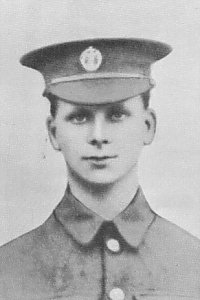
AFTER serving his apprenticeship to an Ironmonger he joined a large firm of Contractors. Previous to his enlistment he was Manager of one of their departments, being responsible for the erection and overhauling of Acetylene Lighting Sets.
Enlisting in March, 1915, he joined the 16th Middlesex Regiment and proceeded to France in the November of that year. On July 1st, 1916, he went over the top at Beaumont Hamel and when last seen he was "well to the fore." The party were met by very severe shell and machine-gun fire and very few survived. Leslie Overton was reported missing.
His Platoon Sergeant writing of him says :-" I was very fond and proud of him, he was so great out there, always cheerful and happy. Anything that required nerve and tact I always fell back on him for, and he never failed me."
He was but 21 years old when his life was thus cut short.
[The CWGC website lists Leslie Overton (PS/2078), Private, Middlesex Regiment, date of death, 01/07/1916, age unknown, remembered on the Thiepval Memorial.]
Back to the Memorial Main Page
